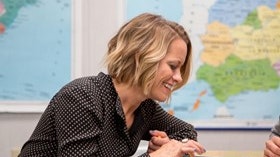Homepage
•
Learning Library
•
Blog
•
Personalizing Spanish class
Expand breadcrumbs
Expand breadcrumbs
- Learning Library
- Blog
- Personalizing Spanish class
- Homepage
- •
- Learning Library
- •
- Blog
- •
- Personalizing Spanish class
Personalizing Spanish class
By Jennifer Snelling
December 9, 2015








